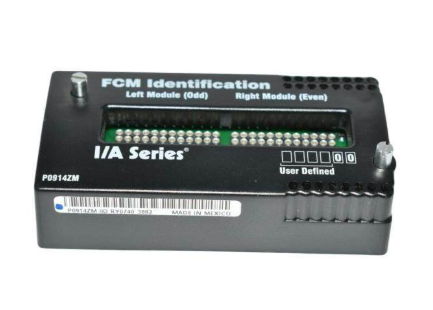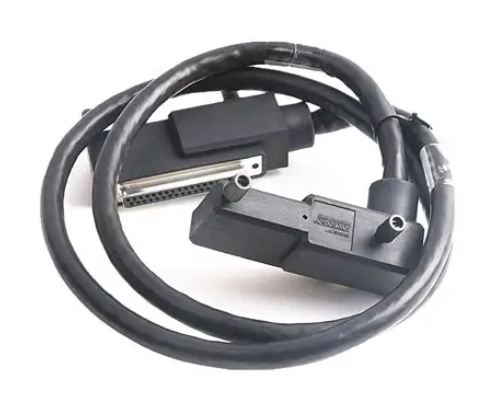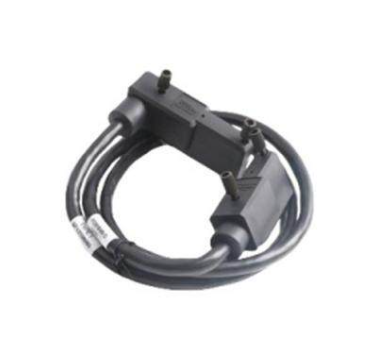A new idea of disinfection and sterilization treatment of wastewater under the new environmental protection law
Status of sewage treatment
China's per capita water resources are small and their spatial distribution is unbalanced. With the acceleration of urbanization and industrialization in China, the demand gap of water resources is also increasing. In this context, the sewage treatment industry has become an emerging industry, and is currently in the same important position as the tap water production, water supply, drainage, and water reuse industries. In order to protect the natural water environment, many countries in the world require the effluent of municipal sewage treatment plants to be disinfected before discharge. In June 2000, the former Ministry of Construction, the State Environmental Protection Administration, and the Ministry of Science and Technology jointly issued the "Notice on printing and distributing the Technical Policy on Urban Sewage Treatment and Pollution Prevention", which stipulates: "In order to ensure public health safety and prevent the spread of infectious diseases, urban sewage treatment facilities should be set up disinfection facilities." In the "Discharge Standards for Pollution of Urban Sewage Treatment Plants" (GBl8918-2002) promulgated on December 24, 2002, the microbial index was listed as the basic control index for the first time, and the effluent of sewage treatment plants must be disinfected. It is also required that the maximum allowable discharge concentration of coliform number in sewage treatment plants that implement the secondary standard and the first-level B standard shall not exceed l0 /L, so that the pathological indicators of China's sewage treatment standards are in line with international standards.
Classification of sewage treatment
Domestic sewage
Usually, the sewage treatment of urban domestic sewage can meet the water quality requirements of urban water use only after primary treatment and simple secondary treatment, which can meet the requirements of industrial circulation cooling and household toilet use, and achieve the purpose of water reuse.
Hospital sewage
Hospital sewage is a kind of wastewater produced in the process of diagnosis, treatment and prevention of diseases in hospitals or other medical institutions, with potential infectivity and acute infectivity. It contains a variety of microorganisms and infectious diseases, such as AIDS, hepatitis B, hepatitis C, typhoid fever, dysentery, tuberculosis bacillus and other viruses, are listed as national dangerous pollutants, if not treated directly, the bacteria will spread through water, soil and air, posing a threat to the human body.
Industrial sewage
Industrial sewage such as: farms, food factories, pharmaceutical factories, cosmetics factories and other water due to contain a large number of metal ions, such as mercury, chromium, cadmium, as well as alkali, sulfide and salts and other inorganic substances and show a unique color, pollution is very strong. If industrial wastewater enters the aquatic ecosystem directly, microorganisms can not only reduce the concentration of heavy metals, but also enrich and amplify its effect. According to research, after heavy metals enter the organism, they can accumulate in an organ and cause cumulative poisoning, which ultimately endangers life. Some of the inorganic pollutants in sewage deteriorate the water quality, endanger aquatic life and agriculture; Some make people chronic poisoning, destroy the normal physiological process of the human body, among which heavy metals are the most harmful to the human body, and even carcinogenic.

Common disinfectant for sewage
Disinfection technology is accompanied by the deepening of human understanding of environmental protection and rapid development, the current sewage treatment disinfection methods mainly include ultraviolet disinfection, chlorine disinfection, ozone disinfection, ClO2 disinfection and so on.
1. Chlorine disinfection
The common chlorine disinfection methods include liquid chlorine method and sodium hypochlorite method. Liquid chlorine method is the most popular method in the 1980s, the technology is mature, the price is cheap, the equipment failure rate and cost are significantly lower than the ozone method, but the chlorine gas leakage phenomenon occurs from time to time, and easy to produce secondary pollutants: sodium hypochlorite method is the most used method in the 1990s, equipment investment is less, low operating costs, safe and reliable, easy to manage, reliable for the drug source It is widely used in sewage disinfection, but the disinfection effect is not as strong as chlorine gas.
2. Liquid chlorine
Liquid chlorine is a strong oxidizing agent that was first used to disinfect sewage treatment plants. Because of its strong bactericidal ability, low price and reliable disinfection, it is the most widely used disinfectant at present. The disinfection mechanism of liquid chlorine disinfection method is to use liquid chlorine dissolved in water to produce hypochlorous acid and hydrochloric acid: Cl2+H2O= HCIO+HC1 Hypochlorous acid HCIO diffuses to the surface of the bacteria and penetrates through the cell wall of the bacteria into the cell interior. When HC1O molecules reach the interior of the bacteria, oxidation occurs, destroying the bacterial enzyme system and causing the bacteria to die.
Disadvantages of liquid chlorine disinfection:
(1) The safety of liquid chlorine disinfection is poor.
(2) There is secondary pollution in liquid chlorine disinfection. Chlorine reacts with certain organic and inorganic components in sewage to form a series of stable chlorine-containing compounds, most of which are harmful to human health, and some chlorine-containing compounds are carcinogenic.
(3) The chlorinated ammonia produced by the reaction of chlorine and ammonia in sewage will reduce the disinfection effectiveness, and the chlorinated ammonia will have toxic effects on environmental organisms after discharge into the water body.
3, sodium hypochlorite disinfection
Sodium hypochlorite can be produced by electrolysis of seawater or saline solution with sodium hypochlorite generator. The effective chlorine in sodium hypochlorite is about 5-15%. Sodium hypochlorite disinfection depends on the effect of OCI-. Sodium hypochlorite disinfection solution is less toxic and easier to operate than chlorine disinfection system. Less training is required compared to chlorine disinfection systems.
Disadvantages: Sodium hypochlorite is easy to deteriorate, the addition of sodium hypochlorite has the possibility of increasing inorganic by-products (chlorate, hypochlorite and bromate), has a corrosive effect on some substances, is not easy to store compared to other solutions, and the cost of chemical agents is higher than chlorine gas.
4. Ultraviolet light
Ultraviolet is an electromagnetic wave with a frequency higher than that of visible light. It is the use of ultraviolet light generating device to generate strong ultraviolet c light to irradiate water, air and surface of objects. When various bacteria, viruses, parasites, algae and other pathogens in water, air and surface of objects are subjected to a certain dose of ultraviolet c light radiation, the DNA structure in their cells is damaged. To achieve the purpose of disinfection and purification.
Ultraviolet disinfection defect
① does not have follow-up disinfection ability, easy to produce secondary pollution
② Only the microorganisms that absorb ultraviolet light will be inactivated, and the disinfection effect is difficult to guarantee when the sewage SS is large
Bacterial cells are not removed in the UV sterilizer, and the killed microorganisms, along with other pollutants, become food for the surviving bacteria

5, ozone disinfection method
Ozone is a strong oxidizing agent, is the use of the unstable characteristics of the three oxygen atoms composed of ozone, the decomposition of the release of new ecological oxygen, and the new ecological oxygen has a very strong oxidation capacity, a strong lethality to bacteria and viruses, resulting in the death of bacteria and viruses. Ozone disinfection efficiency is high, and can effectively degrade the residual organic matter in the sewage, decolorization and odor removal effect is excellent, and the pH value and temperature of the sewage have little impact on the disinfection effect, and do not produce a pollution.
Disadvantages: The use of ozone to disinfect the effluent of urban sewage treatment plants has disadvantages such as large investment, high operating costs, complex equipment management, and so on. In addition, when the water quantity and water quality change, it is difficult to adjust the amount of ozone added. Therefore, ozone disinfection is mainly suitable for industrial wastewater treatment disinfection and small-scale urban sewage treatment disinfection with high effluent quality requirements, high chroma or difficult to degrade substances in the effluent, and small amount of water, and is not suitable for large and medium-sized urban sewage treatment plants.
6, chlorine dioxide disinfection
Chlorine dioxide disinfection is characterized by oxidation, not chlorination, and therefore generally does not produce carcinogens. The disinfection effect of chlorine dioxide is comparable to that of chlorine gas, but when the concentration of NH3N in sewage is high, the amount of chlorine consumption will increase greatly, but because chlorine dioxide does not react with NH3, its dosage does not increase. In addition, chlorine dioxide disinfection is not affected by pH. Chlorine dioxide is unstable and explosive, so it must be made on site for immediate use. The preparation of chlorine dioxide with low chlorine content is complicated, and the price of raw material (NaClO2) is higher than that of other disinfection methods, so the widespread adoption of this method is limited. Therefore, the chlorine dioxide disinfection process is only used in some small and medium-sized sewage treatment projects in China.
To sum up, the six disinfectant methods introduced in this paper are the most popular technical methods used in sewage treatment systems at this stage. Although they have their own characteristics in the actual application process, they are being recognized by more and more enterprises due to their high operating cost, high risk, difficult to guarantee disinfection effect, difficult to store and poor stability. From another aspect, it also shows that the above toxic sterilization methods are being abandoned. The bactericidal effect is good, easy to store, no harm to people, and a disinfectant that is colorless, odorless, non-toxic and no residue has slowly entered people's vision, that is, the original imported from Germany, food-grade silver hydrogen peroxide ion compound disinfection disinfectant: Oktez.
Oquetes
Oktez: Imported from Germany, food grade silver hydrogen peroxide compound disinfectant, the main component silver hydrogen peroxide, food grade colorless, odorless, non-toxic and no residue type, IFS international food standard certification, EU EMAS testing certification, ISO9001, ISO14001 environmental management system certification. It is internationally recognized as the most ideal replacement product for chlorine series disinfection, recommended by the State Environmental Protection Administration. Its biggest advantage is that it reacts with humus or organic matter to produce almost no diverging organic halides, does not generate and inhibit the formation of carcinogens trihalomethanes, and does not react with ammonia and amino compounds. Practice has proved that not only its disinfection effect and the ability to remove pollutants in water is better than liquid chlorine (including the strongest chlorine resistance of viruses, spores, etc., have a good disinfection effect), but also the disinfection effect is not affected by water pH and ammonia and amine compounds. After testing by the European Union and many foreign research institutions, it is widely used in most European countries, and it is also recognized as the latest generation of sterilization and disinfectant in Australia and North America. Its biggest feature is that the contact time in the sterilization process is very short, the sterilization efficiency can reach 99% in only a few minutes, and it can enter the interior through the microbial surface film, destroy the enzyme system, resulting in its metabolic dysfunction and death, to achieve the purpose of rapidly killing bacteria, fungi, viruses, spores. It is an efficient and broad-spectrum disinfectant for sewage. It has the characteristics of thorough sterilization, no microbial resistance, no toxic residue, and no repeated pollution. The oxidizer used is hydrogen peroxide, which is combined with the stabilizer to form a composite solution. Trace silver ions added as catalysts can remain effective for a long time. The bactericidal action of silver ions is based on the univalent silver ions firmly binding to bacterial proteins through covalent and coordination bonds, thus passivating or precipitating bacteria.

The characteristics of Octaeus
1. Strong disinfection power. The efficacy is rapid, and the intended disinfection purpose can be achieved in a short time, such as the sterilization rate of more than 99%, and the efficacy lasts for a long time.
2, can be disinfected by various methods. Such as drinking water, spray, washing, flushing, etc.
3, easy to dissolve in water. It is not affected by the change of water hardness and pH in the environment.
4, stable nature. Not affected by light and heat, long-term storage effect is not reduced.
5. Safe for humans and animals. Odorless, non-irritating, non-corrosive, non-toxic, no adverse side effects.
6. Octaz's two-phase product for the combination of oxidation and microaction - unlike other disinfectants - has the effect of destroying biofilms. This is an important step in sterilization, as bacteria or viruses produce such biofilms as natural protection. The oxygen separated by hydrogen peroxide destroys the biofilm, allowing silver ions to easily kill bacteria or viruses.
7, a broad spectrum of bactericidal ability, can kill including spores, spores, molds and viruses, including more than 200 kinds of microorganisms
8, rapid sterilization, only 2-3 hours to complete the entire sterilization process
9, colorless non-toxic, no residue, safe and reliable, completely decomposed into water and oxygen
10, complete verification data, EU related safety management, TUV, GMP and material compatibility reports
11, cost-effective, save disinfection costs.
12, it can effectively kill bacteria, viruses, amoebas, fungi and algae, its very wide range of applications make users easy to operate and handle. Only one product can be used to achieve the purpose of using 2, 3 or even multiple products at present.
13. The economy. Low concentrations also ensure efficacy.
The advantages of Octaeus
1, efficient and broad-spectrum bactericidal ability: Oktez is a broad-spectrum disinfectant, can kill bacteria, fungi, molds, viruses and other currently known all types of microorganisms, and can kill spores, molds and other traditional methods are difficult to kill microorganisms.
2, with good stability: Oktaishi is a multi-component composite solution, with good stability. It can remain stable at high temperatures, and even at high temperatures, its effectiveness will be enhanced. Not affected by temperature, light, PH value.
3, will not produce drug resistance: different from chlorine, quaternary ammonium salts and other products, the unique bactericidal principle of Oktez, will not produce drug resistance, so it can be long-term, stable application in sewage disinfection.
4, without any toxic residue, food grade products in the true sense: the main component of Oktez is hydrogen peroxide, which is decomposed into oxygen and water after action, and will not produce any harmful residue on the product. Octez has proven worldwide success in the pharmaceutical industry, food processing, drinking water treatment, beverages, dairy processing, agriculture and other industries.
5, no repeated pollution: there is no residue, so there is no need to wash again after use, avoiding the possibility of repeated pollution.
6, durable antibacterial: The trace amount of silver ions in Octex has a lasting effect, has antibacterial function, and can ensure a long shelf life of the product.
outlook
The world's water shortage and the increasingly strict monitoring of international water quality standards have great potential for the development of Ortec in sewage treatment and reclaimed water disinfection. It has obvious advantages over other traditional disinfection methods in terms of sterilization effect, quenching efficiency and operating cost. The contaminated water can be reused in many fields to realize the recycling of sewage. In the future, more sewage treatment plants will adopt the disinfection technology of Oktez, and its scale will gradually be promoted from small to medium-sized to large sewage plants, becoming the most economical and effective disinfection method in China.
- EMERSON
- Honeywell
- CTI
- Rolls-Royce
- General Electric
- Woodward
- Yaskawa
- xYCOM
- Motorola
- Siemens
- Rockwell
- ABB
- B&R
- HIMA
- Construction site
- electricity
- Automobile market
- PLC
- DCS
- Motor drivers
- VSD
- Implications
- cement
- CO2
- CEM
- methane
- Artificial intelligence
- Titanic
- Solar energy
- Hydrogen fuel cell
- Hydrogen and fuel cells
- Hydrogen and oxygen fuel cells
- tyre
- Chemical fiber
- dynamo
- corpuscle
- Pulp and paper
- printing
- fossil
- FANUC
- Food and beverage
- Life science
- Sewage treatment
- Personal care
- electricity
- boats
- infrastructure
- Automobile industry
- metallurgy
- Nuclear power generation
- Geothermal power generation
- Water and wastewater
- Infrastructure construction
- Mine hazard
- steel
- papermaking
- Natural gas industry
- Infrastructure construction
- Power and energy
- Rubber and plastic
- Renewable energy
- pharmacy
- mining
- Plastic industry
- Schneider
- Kongsberg
- NI
- Wind energy
- International petroleum
- International new energy network
- gas
- WATLOW
- ProSoft
- SEW
- wind
- ADVANCED
- Reliance
- YOKOGAWA
- TRICONEX
- FOXBORO
- METSO
- MAN
- Advantest
- ADVANCED
- ALSTOM
- Control Wave
- AB
- AMAT
- STUDER
- KONGSBERG
- MOTOROLA
- DANAHER MOTION
- Bently
- Galil
- EATON
- MOLEX
- Triconex
- DEIF
- B&W
- ZYGO
- Aerotech
- DANFOSS
- KOLLMORGEN
- Beijer
- Endress+Hauser
- MOOG
- KB
- Moxa
- Rexroth
- YAMAHA
- Johnson
- Westinghouse
- WAGO
- TOSHIBA
- TEKTRONIX


Email:wang@kongjiangauto.com



































































































































